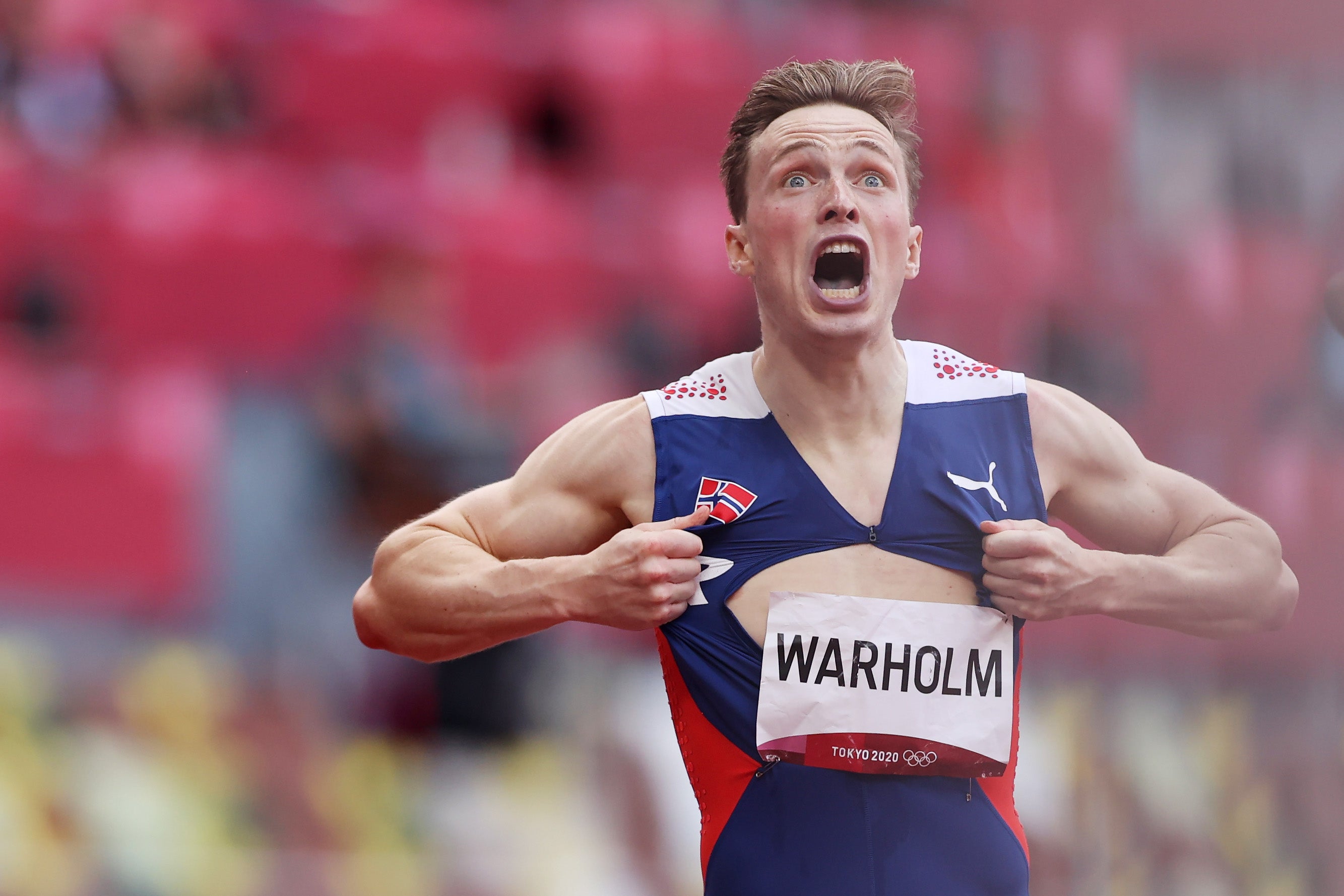
What are ‘super spikes’?
A new generation of “super spike” running shoe typified by Nike’s Air Zoom Victory and Dragonfly models, for middle and long-distance running respectively, have been credited with a number of track-and-field athletes smashing world records of late.
The likes of Mo Farah, Letesenbet Giday, Joshua Cheptegei and Sifan Hassan all broke records in September and October last year and were all wearing Nike Air Zoom Dragonflys when they did so.
The shoes in question are superlight, have rigid plate soles and are made with highly-responsive, energy-returning Pebax foam.
Follow Tokyo Olympics 2021: Latest medals and updates
They are thought to add as much as one-to-three seconds per mile to a runner’s performance, depending on how responsive the athlete is to the change.
The company itself has touted its super spike range as representing no less than a “complete paradigm shift in distance track spike design” while rival prototypes from the likes of New Balance are being trialled.
One of the most eye-catching demonstrations of their effectiveness occurred in February this year, when British sprinter Elliot Giles wore a pair of Air Zoom Victory spikes and beat the country’s indoor 800m record with a time of 1 minute 43.63 seconds, laying to rest a top time set by Sebastian Coe as long ago as 1982.
Giles, 26, had never previously reached an Olympic or World Championship final and was best known for claiming a bronze at the European Championships in 2016.
Why are they divisive?
Results like that inevitably raised eyebrows, as some argued that the shoes give the wearer an unfair advantage, prompting certain athletes to respond by downplaying their effectiveness as a matter of personal pride.
When it was suggested to Giles that his triumph in Poland was down to his choice of footwear, he responded: “Because I’ve done well, people say it must be the shoes… It’s a nonsense and a bit of an insult.”
Marc Scott, another British runner who had just surpassed his personal best in the 10,000 metres in California that same month, was angered when TV commentator Tim Hutchings suggested his shoes had played a role and told him on Twitter to “get off your high horse and give some credit where it’s due rather than consistently nag about the shoe technology”.
As The Guardian’s Sean Ingle has noted, this means that “a curious omerta - a case of ‘don’t mention the spikes’” hangs over the technology, which causes athletes, ordinarily expected to promote their sponsors, to instead behave in curiously reticent fashion, despite no national or international sporting body having moved to prohibit the shoes so long as they are widely available.
As Lord Coe himself, now president of World Athletics, has said: “Without the shoe brands, particularly Nike, global elite athletics is dead in the water. So where’s the incentive to police it?”
Why are we asking this now?
New Olympic 400m hurdling champion Karsten Warholm criticised an American rival for wearing the shoes and suggested they threatened to rob track sport of its credibility after smashing his own world record to take the title in 45.94 seconds in Tokyo on Tuesday.
The Norwegian, who does not wear Nike shoes and is currently working with Puma and the Mercedes F1 team to develop his own footwear, questioned the trainers worn by US competitor and silver medallist Rai Benjamin after the race, suggesting it was unfair that some athletes were free to run on apparently superior spikes unchallenged.
“He had those things in his shoes, which I hate,” Warholm said of Benjamin. “I don’t see why you should put anything beneath a sprinting shoe. In the middle distance, I can understand it because of the cushioning. If you want cushioning, you can put a mattress there. But if you put a trampoline I think it’s b*******, and I think it takes credibility away from our sport.”
Benjamin offered his own explanation for his strong performance, commenting: “It’s a very good track. It’s soft, it has a lot of give, it’s a phenomenal track. People say it’s the track, the shoes, and the conditions were really good.
“But I could wear different shoes and still run fast. No one will do what we just did, I don’t care who you are. Could be Kevin Young, Edwin Moses, respect to those guys, but they cannot run what we just ran just now. It’s a really fast track, it felt good, the conditions were really good.”

Madeleine Kelly of Canada’s Running Magazine, for one, has previously brushed aside the controversy, saying there will always be doomsayers decrying any new technical developments in elite sport and suggesting that lockdown’s positive impact on training schedules could equally explain the rash of record-smashing.
“As spike technology is improving, so are pacing technologies and track surfaces - the world keeps on turning, and running must turn with it,” she said. “While these new spikes are certainly among the many changes that are bringing about faster times, they’re not the sole reason, and in my opinion, it’s reductionist to say they are.
“We’re living in a completely different world than we were a year ago, and maybe some of the changes the pandemic brought have positively impacted training. It’s entirely possible that forcing life to slow down helped some athletes speed up.”







